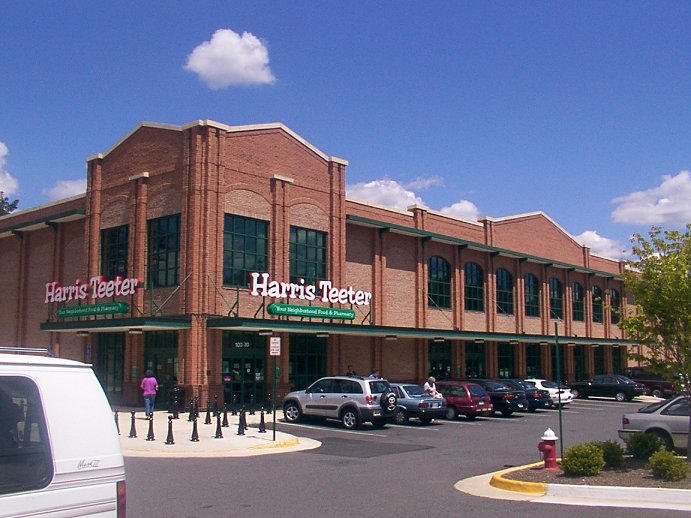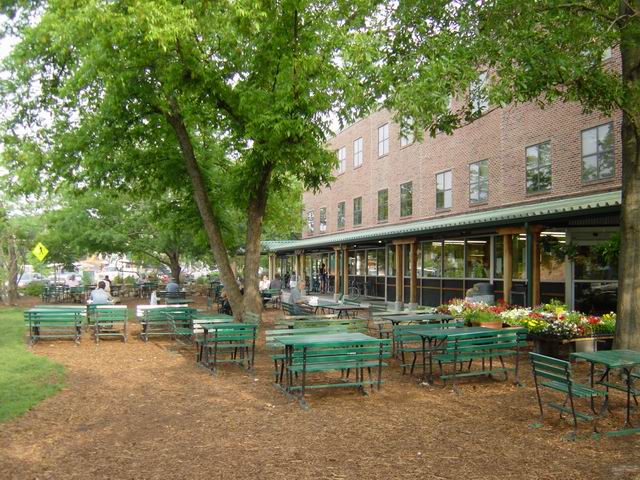Weaver Street Market:
- No large sign with a huge logo on it when entering
- There is a large lawn outside for public gatherings
- Non-linear lay out of store
- Fewer number of total products, but greater variety within each type of food available
- More perishable goods
- Included salad, coffee, and sushi bars to encourage local consumption
- A few different companies, such as Odwalla, produce a large amount of the food in different categories. There is food imported from far away places such as France.
- Employees do not have a full uniform
- Plastic Bags are not available
- Many products are sold unpackaged
Harris Teeter
- In the same geographical location as Weaver Street Market revealing issues of competition
- Different store hours to WSM (open 24 hours a day)
- Every employee is completely uniformed
- Lots of focus on family-friendly appearance, large displays
- Larger in size
- In the milk section, locally bottled milk composes a smaller percentage
- Advertisements appear in milk area revealing price cuts
- There are references to membership benefits
- Automatic check-out to expedite customer handling
- Numerous "brands" that are all bottled by Harris Teeter- simulated options
Food Lion
- Different geographical location from other two sites
- Store roughly the same size as WSM, smaller than Harris Teeter site
- Less focus on appearance
- Employees do wear uniforms
- A number of milk brands including options not bottled by Food Lion
- Advertisements show prices in large font, while product is hardly visible
- Enormous Sign on building
- Traditional lay out of store
- Fewer perishable goods, more packaged









